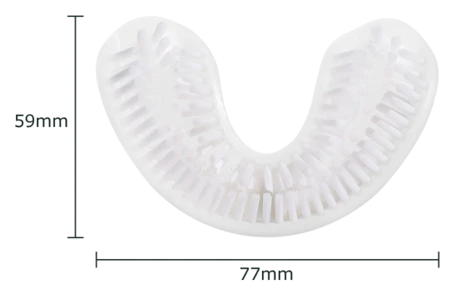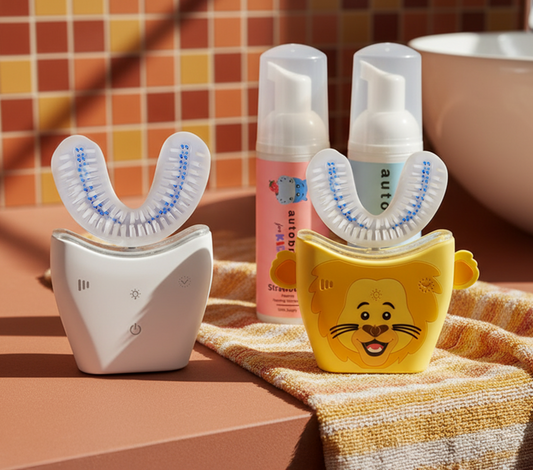
What to Do If Your Toddler Eats Toothpaste
As a parent, it's normal to worry when your toddler starts exploring. This is especially true when they begin tasting everything, even toothpaste. One common concern that can send any parent into a panic is when your little one swallows toothpaste.
So, what should you do if your toddler eats toothpaste? Is it dangerous? And how can you prevent it from happening again? This guide answers these questions, giving you clear steps to take if your toddler consumes toothpaste. It also explains the risks, when to seek medical help, and how to prevent it in the future.
Understanding the Risks of Toothpaste Ingestion
Toothpaste is safe for brushing, but when ingested in large amounts, it can be harmful. Most toothpastes contain fluoride, which helps strengthen teeth and prevent cavities. But if your toddler eats too much, fluoride can cause stomach pain, nausea, vomiting, and diarrhea.
- Fluoride's Role: Prevents cavities.
- Symptoms of Overconsumption: Nausea, vomiting, stomach pain, diarrhea.
- How Much is Too Much?: A small amount, like what’s left on the brush, is fine. However, larger amounts can pose risks.
For toddlers, use only a pea-sized amount of toothpaste. This minimizes the risk while still protecting their teeth.
Immediate Steps to Take After Ingestion
If your toddler swallows toothpaste, stay calm. Panicking won’t help. Here’s what to do:
- Estimate the Amount: Try to figure out how much toothpaste your child ingested.
- Do Not Induce Vomiting: This can make things worse.
- Contact Poison Control: Call immediately for guidance. They’re trained to help in situations like this.
If Poison Control advises, follow their instructions. They might recommend seeing a doctor, especially if a large amount was consumed.
When to Seek Medical Attention
If your toddler shows signs of fluoride toxicity—like stomach pain, vomiting, or diarrhea—seek medical help right away. Fluoride can affect toddlers more intensely, so it’s important to act fast.
A doctor may perform tests to understand how much fluoride was absorbed and determine the best treatment. Quick action can prevent complications.
How to Prevent Toothpaste Ingestion in the Future
To avoid toothpaste mishaps, supervision is key. Here’s how to reduce the chances of your toddler swallowing toothpaste:
- Watch Them Brush: Stay with your child during brushing.
- Choose Kid-Friendly Toothpaste: Opt for toothpaste designed for young children, often with less fluoride.
- Store Toothpaste Safely: Keep toothpaste out of your toddler’s reach.
- Teach Them to Spit: Encourage your toddler to spit out toothpaste from a young age.
- Use Training Toothpaste: Some types are safe if swallowed, offering peace of mind during the learning process.
Introducing the autobrush® Sonic U-Shaped Toothbrush for Kids
If you’re looking for an easy, effective way to keep your toddler’s teeth clean while reducing the risk of swallowing toothpaste, the autobrush® Sonic U-Shaped Toothbrush for Kids is the perfect solution. With 58,000 soft nylon bristles and a gentle sonic motor, it delivers a 30-second full-mouth clean that’s fun for little ones.
The toothbrush is designed for small hands, making it easy for toddlers to hold, while the built-in brushing song and playful characters keep them engaged. By cleaning multiple surface areas at once, the autobrush® reduces the need for large amounts of toothpaste, minimizing the risk of ingestion. Plus, its simple, quick brushing method ensures that brushing becomes a smooth, stress-free routine.
Educating Your Toddler and Family
The best way to prevent toothpaste ingestion is education. Teach your toddler the importance of spitting out toothpaste and make it fun. Use visuals like videos or books to reinforce the message.
It’s also important to keep everyone in your household informed about the risks. This includes caregivers, older siblings, and anyone helping with brushing. A simple checklist for everyone involved will help ensure consistent practices.
- Explain why toothpaste should be spit out.
- Use videos or books to teach.
- Inform all caregivers and family members.
- Keep toothpaste out of reach.
- Stick to consistent practices.
When everyone understands the risks, the chances of toothpaste ingestion drop significantly.
Alternatives for Safe Oral Hygiene
If your toddler tends to swallow toothpaste, consider these alternatives:
- Use non-fluoridated toothpaste.
- Choose training toothpaste for young kids.
- Schedule regular dentist check-ups.
- Follow personalized dental advice for your toddler.
And, don’t forget regular dentist visits. They can offer guidance on which products are best for your child’s oral health. Choosing the right products and sticking to a good routine can help protect your child's teeth. This way, you can avoid unnecessary risks.
Conclusion
Handling a situation where your toddler swallows toothpaste can be stressful, but knowing what to do can make a big difference. Stay calm, follow the steps outlined, and take action if necessary.
With education, proper supervision, and preventive steps, you can reduce the chances of toothpaste ingestion in the future. Share this knowledge with other parents and caregivers to help keep toddlers everywhere safe.
By staying informed and prepared, you’ll be ready for whatever comes next.












